Software Option for Plus
versions
The IMDPlus option extends the Interactive Modal Dynamics (IMD) techniques available in all LUSAS products. Whilst IMD models a single loading event in a single direction, IMDPlus allows multiple loading events with more advanced loading conditions to be solved. IMDPlus is applicable to both 2D and 3D structures and has three primary uses
- Moving load analysis of
structures, such as bridges subjected to moving vehicle or train loads, where the magnitude and configuration of the loading remains constant throughout the analysis.
- Moving mass and moving sprung
mass analysis of
structures, such as bridges subjected to moving vehicle or train loads, where mass-spring-damper systems are used to represent the vehicle. The configuration of the systems remains constant throughout the analysis but, as they move across the structure, the dynamic response of the unsprung and sprung masses affects the applied loading due to inertia effects.
- Seismic response analysis of structures subjected to acceleration time histories of support motion.
IMDPlus is of considerable benefit when compared with traditional direct integration time-stepping procedures - in many cases results are obtained in seconds as opposed to several hours.
IMDPlus analysis
An IMDPlus analysis uses conventional eigenvalue analyses to obtain the undamped modes of vibration for a structure over the frequency range of interest. The modal response in the form of frequencies, participation factors and eigenvectors, together with the seismic accelerations or moving load/moving mass vehicle loads, enable IMDPlus to compute the dynamic response for each mode of vibration. The assumption of linear structural behaviour allows the IMDPlus facility to utilise linear superposition methods to calculate the total response of the structure from each of the contributing frequencies. The IMDPlus facility therefore offers large savings in design and analysis time and greatly reduces the computational resources required for lightly damped, linear transient dynamic analyses.
Moving Load and Moving Mass / Sprung
Mass Analysis
| The
moving load and moving mass options facilitate the dynamic response
analysis of a bridge for different vehicle or train speeds by
maintaining a consistent vehicle motion across the bridge and simply
adjusting the time interval for the modal calculations. In a moving
load analysis, the loading remains constant throughout the analysis.
In a moving mass analysis, the dynamic response of the
mass-spring-damper systems, that represent the vehicle, modify the
dynamic forces acting on the underlying structure due to inertia
effects. For both options the calculations can process a range of
vehicle speeds on each execution of the IMDPlus facility. Results are
readily obtained for either a single speed to give full time history
output, or for a range of speeds to give peak response output. |
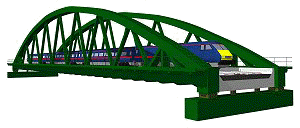 |
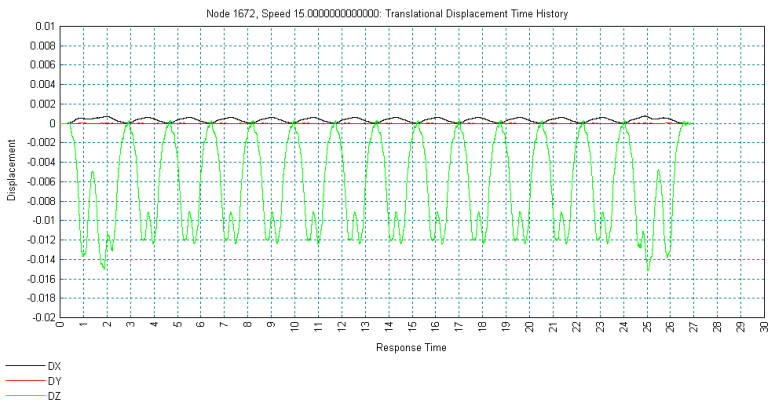
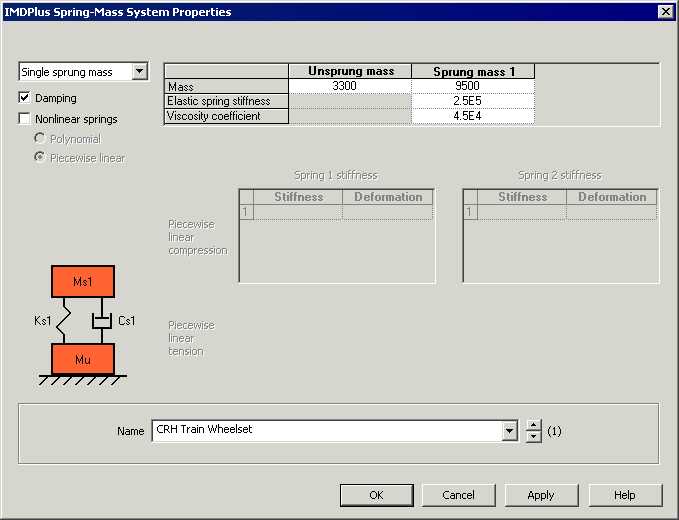
Seismic Analysis
The seismic analysis option calculates
the response of a structure to an acceleration time history input
applied at the support nodes. A different acceleration record can be
applied in each global direction and these can be factored based on
design code requirements. All support nodes are accelerated with the
same time history record in each direction and up to seven earthquake
combinations can be analysed in a single IMDPlus analysis. Time
histories, peak summaries, Secondary Response Spectra (SRS), and modal
combinations can all be output.
Results
Results can be displayed using the
extensive LUSAS graph plotting facilities or using the standard
contour, vector or peak value features. Results for individual nodes
or elements can be visualised or selections of nodes or elements can
be included in a single IMDPlus analysis to enable summed, averaged or
enveloped results to be produced. In a moving mass analysis results
for the mass-spring-damper systems can be obtained to aid in the
assessment of vehicle dynamics. Since both the damping and 'time-step'
are specified within IMDPlus there is no need to carry out a series of
computationally expensive transient dynamics analyses to assess the
effect of these parameters on the structural response.
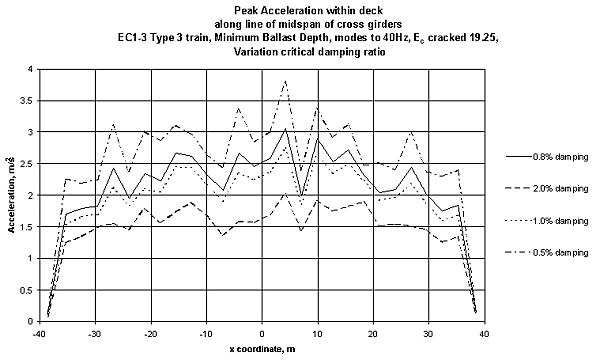
Results that can be calculated, visualised, graphed or output in a
number of formats include:
-
Response
time history - displacement
/ velocity / acceleration time histories / dynamic amplification
factors / reaction for nodes or outputs force / stress / strain
time histories for elements. Displacements / velocities
/ accelerations / forces for mass-spring-damper systems of a moving mass
vehicle.
-
Peak
response summary - maxima / minima /
absolute peak responses and times of displacements / velocities /
accelerations / dynamic amplification factors / reaction for nodes
or forces / stresses / strains for elements.
-
Secondary
Response Spectra - can
be generated based on the acceleration response for nodes.
-
Modal
combination/factor history - modal
factors for the response of the structure can be output at each
time step of the analysis.
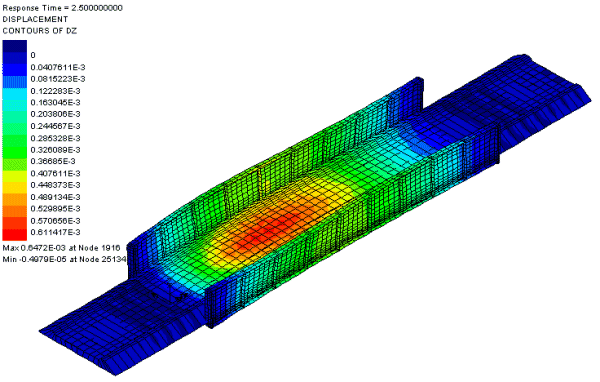
Summary of
IMDplus Features
IMDPlus Option
Multiple event simulation
Fast solution times
Linear dynamics effects
No loss of contact moving mass
analysis
Support for 2D Plane Strain, 2D Plane Stress, 3D continuum, 2D and 3D bars, 2D and 3D beams, 2D and 3D joints, and 3D thin and thick shell
elements
Displacements / velocities /
accelerations / Dynamic Amplification Factors / reactions for nodes
Forces / moments, stresses / strains, stress / strain resultants for
elements
Displacements / velocities /
accelerations / forces for mass-spring-damper systems of a moving mass
vehicle
Vehicle configuration definitions enable multiple vehicle types to be analysed during a single IMDPlus
session
Can solve large and complex modelling problems in a fraction of the time taken by traditional direct integration time-stepping procedures, giving large savings in design and analysis
time
Output of raw results in a number of formats
Example uses of
IMDplus
IMDplus has been successfully used by
the LUSAS consultancy department and by numerous consultants
throughout the world for the design of structures where both the
seismic and moving vehicle dynamic responses are required. Projects
where IMDplus has been used to speed up design timescales include:
- Devonport Royal Naval Dockyard, UK
- Liquid Natural Gas Tanks, Worldwide
- Newark Dyke Rail Bridge, East Coast
Mainline, UK
- Bridges for West Coast Mainline, UK
- Sg. Tuaran Road Bridge, Malaysia
...and more
| "IMDplus
is of considerable benefit when compared with traditional direct
integration time-stepping procedures - in many cases results are
obtained in seconds as opposed to several hours". |
Find out more
|
|
Software Information
|